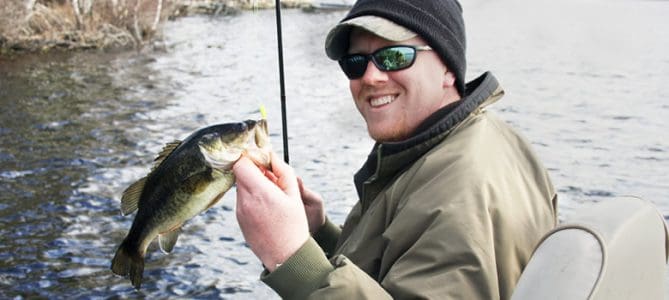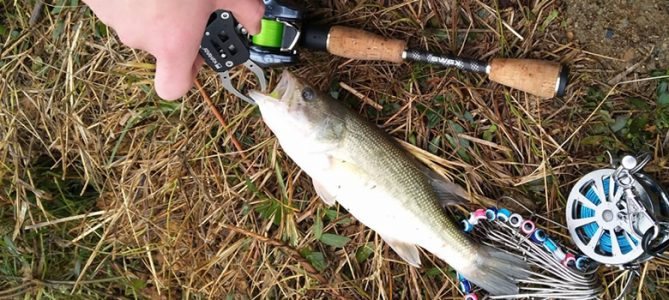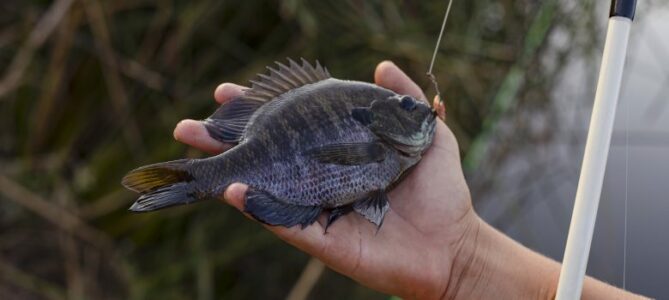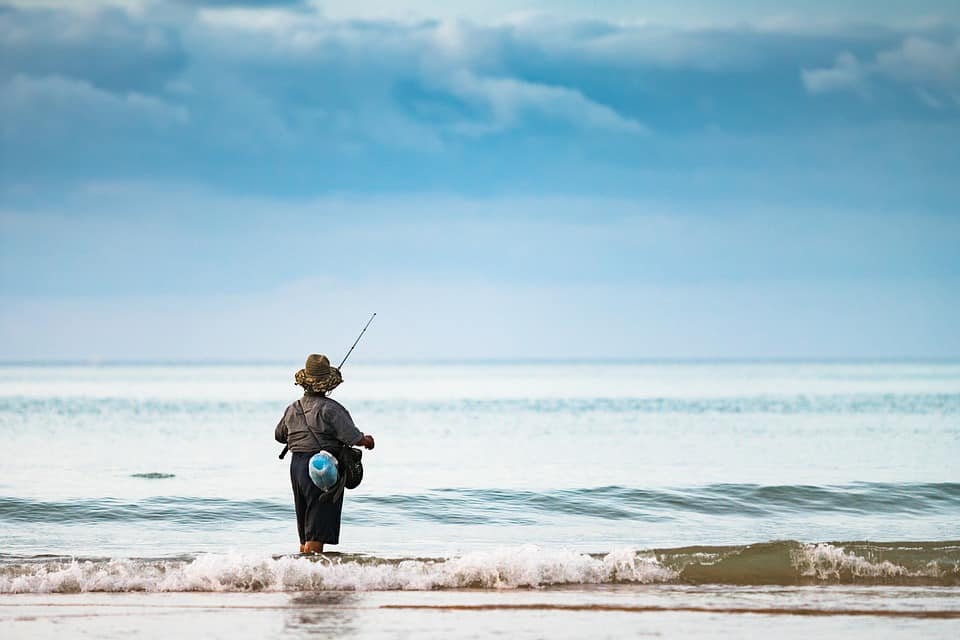If you buy via a link on this page, we may receive a commission, at no extra cost to you.Learn more
Bass fishing can be a very relaxing sport, and there isn’t a shortage of information out there that claims it can help you learn it better. Though many may wonder how to bass fish out of a bay boat, and it if has any advantages over the bass boat.
How to Bass fish out of a bay boat? You can use your bay boat to find a suitable spot that Bass visit often. There are a few things to keep in mind when bass fishing from a bay boat
- Keep your poles attached to the rod holders.
- Anchor your bay boat to help reduce the effects of the wind.
- Use the storage space included in the boat.
Below, we’ll cover some of the pros and cons of a bass boat, which brands are a viable option when fishing as well as throwing you some tips to help you conquer that new fishing spot you came across.
Tips for Fishing with a Bay Boat
A bay boat has some unique features that make fishing a breeze. Consider the following tips if you’re bass fishing on a bay boat.
Keep your poles attached to the rod holders.
There are many areas on the bay boat where you can set up your fishing poles securely. This will allow you to be hands-free, and you won’t have to worry about it being dragged in the water.
Anchor your bay boat.
The bay boat has minimum wind resistance, so dropping the anchor can help keep things in place.
Use the storage space included in the boat.
Bay boats are going to come with storage compartments that you can use to hold extra rods that won’t fit in the holders. Many come with seats that can be flipped down for extra fishing space.
Pros of a Bay Boat
Bay boats are starting to become more common among freshwater fishermen. You’ll typically see these center consoles out in the ocean, where the body of water is much bigger. Though many prefer bass boats for their fishing, there are a few ways that a bay boat can provide similar advantages.
- Bay boats are spacious due to the console being placed in the center of the boat. This allows the fisherman to bring in more gear, or allow multiple fishermen to fish comfortably. The boat is 21-24ft in length, which helps it fight right in those tight fishing spots.
- The casting deck allows three grown adults to fish comfortably, and the hull is soft enough to stand on for long periods of time without having any back pain. Typically, there is also room in the back of the boat for another fisherman, allowing up to four fishermen to cast their lines safely.
- The versatility of the bay boat allows it to go into salt-water, making it a preferred boat for those that also plan to fish in the ocean. The draft is another factor in this by giving the boat the ability to access shallow waters, bringing inshore banks as a potential place to cast from.
Cons of a Bay Boat
While the bay boat certainly has its advantages, it comes with enough drawbacks that leave some fishermen looking for another boat. There isn’t a staggering amount, but the qualities it lacks can make it a tougher sell than most.
- A bay boat lacks any overhead cover of any kind. This makes fishing in the rain, or blistering heat an inconvenience, and the hull may become too slippery to walk on. Bad weather could potentially ruin your time fishing, making the cover from bass boats a bit more viable.
- The boats are also known for being very light. This means that a high enough wind speed could move your boat farther down than you would like. Your castings could also be affected by this, making it harder to reel in any fish.
Bass Fishing Tips For Beginners
Bass fishing can be hard for beginners that don’t know the ins and outs of the craft. Below, we’ll list nine of the best things to keep in mind when starting out, or if you haven’t hit your fishing spot in years.
Finding The Right Locations.
- You’ll find bass in shady areas. Keep your eye on cover. Areas around wood and lily pads can be a good place to cast your line. These areas help conceal the bass so they can ambush their prey, and they are occasionally seen roaming the open waters.
- Match the Hatch. This is a term for choosing your lure based on what type of local fish the bass is eating. They have variety in their diet, eating baitfish like BlueGill or weirder pray like baby ducks.
- Try new fishing spots. It can be easy to sit in one fishing spot after multiple good catches, but allowing yourself to learn new techniques can be beneficial. Fish in bodies of water that are different from the ones you usually go to and learn about how to fish in those conditions. If you are used to fishing in dirty water, go to a clearer lake and try to master a few drop shots.
Weather Tips
- Understand how the weather could affect your fishing. Bass are going to be affected dramatically by day to day weather conditions. Understanding how they behave in these conditions can be crucial when it comes to reeling anything worthwhile.
If it’s a cloudy day, then you’ll be happy to know that the bass are more likely to expose themselves in open water. Spinnerbaits and topwater baits should be your go to here. When it’s sunny, the bass stick more to shady areas, so use a jig to draw them out of cover.
- Understand the water. Knowing the best bass spots on the lake is a good thing, but learning how the water temperature will affect your future catch is important. Depending on where you live, and what time of year it is, the weather is going to affect the bass’ feeding patterns, as well as how much it is going to roam around out of cover. When it’s colder, use a slower moving bait, whereas it is preferred to use more aggressive bait in warmer water.
- Work WITH the wind. High winds can make fishing irritating. You may not be able to keep the boat it place, or you may find it impossible to execute a good cast. Though it may seem like it isn’t worth it, it is important to not give up in moments like this. Bass will be stimulated by the wind, and when you do manage to cast your line, you could see more bites come your way. Use moving baits on windy days to help your lure cover more areas, and prevent you from having to reel in for another cast.
General Tips
- Get better with tying knots. Pick your favorite knot type and practice it until you could do it blindfolded. You don’t have to go that far, but it certainly beats having to retie a line after it got snapped. You don’t have to learn every knot in the book, a simple one like the Clinch knot will do just fine, and there are many resources that can teach you how to tie it.
- Research your areas often. Technology is going to be your best friend for fishing. Use resources like Google map to gain a clear idea of any lakes around you, and start planning on the best areas where bass could be. You could see cover spots perfectly, and have a plan set up before you even leave the house.
- Fish constantly. It can be really easy to give up if the pattern you were following became unpredictable. Maybe the bass haven’t bit as often by the docks anymore, or the weather isn’t helping you at all.
When you’re going through a rough patch, stick to a body of water that you know best, your confidence there could help you reel in some fish. Don’t go from flip flop from body of water when it gets tough, as you won’t be able to stay consistent with the conditions you are facing.




